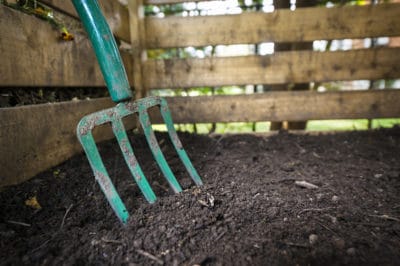Soil for Strawberries
Strawberries simply won’t do well in poor soil, especially if you’re looking for big crops of juicy berries. The plants need plenty of organic matter, such as well-rotted leaf mold, aged manure or organic compost. All of these not only provide nutrients but also improve drainage, a second important requirement of the strawberry plant. Soil should also be on the acidic side – pH of 5.5 to 6.0.
Fertilizer Options
You can choose commercial fertilizer or create your own. You also have the option to use dry or liquid fertilizers. Here are some possibilities:
- Commercial 10-10-10 fertilizer.
- Organic commercial 10-10-10 fertilizer.
- Home-made fertilizer from materials like compost and aged manure.
- Nutrient supplements like kelp for trace minerals.
- Additional nitrogen from blood, feather and fish meal.
- Additional potassium from wood ashes or greensand.
Potassium vs. Nitrogen
While all plants need nitrogen, potassium and phosphorus, strawberries have different needs at different times. In the early spring and late fall, the plants need additional nitrogen. However, potassium is integral for fruit production in the latter part of the spring. If nitrogen is higher than potassium at this point, the plants may focus on leaf growth rather than fruit production.
Fertilizing by Plant Type
Strawberries are June bearers or everbearers. In addition, there’s a sub-category of everbearers called day-neutral plants. Each requires different fertilization strategies. Don’t fertilize June bearers after early spring – they put too much energy into growing leaves instead of fruit. These plants should be fertilized after the last harvest of the season so they can put their energies into developing runners and crowns. Fertilize everbearers monthly during the growing season.
Fertilizer Amounts
The basic rule of thumb is to apply one pound of 10-10-10 fertilizer per each 20-foot row one month after you first plant. If the berries are over a year old, you should fertilize in mid- to later summer. Apply one-half pound of 10-10-10 per 20-foot row. Apply dry fertilizer around the base of the plant and water in well. Liquid fertilizers. can be sprayed over the plant and soil.
Other Tactics
Using fertilizer is only one way to promote plant growth and health. You must never let the plants lack for water. Dehydrated plants can’t absorb nutrients well. Keep down weeds, as they will steal nutrients. Strawberries must be grown in full sun; even fertile soil can’t correct for too little sunlight. Cut off runners unless you are using them to create a new bed.
